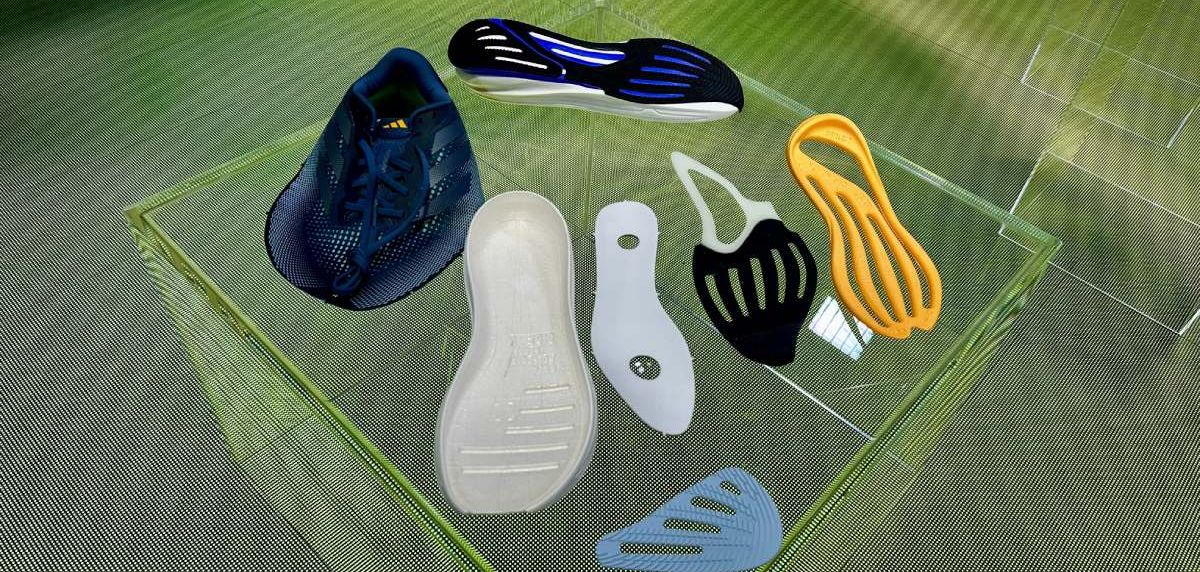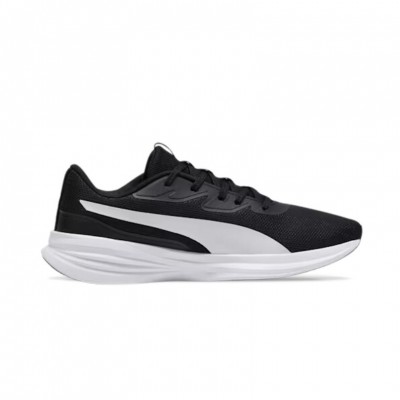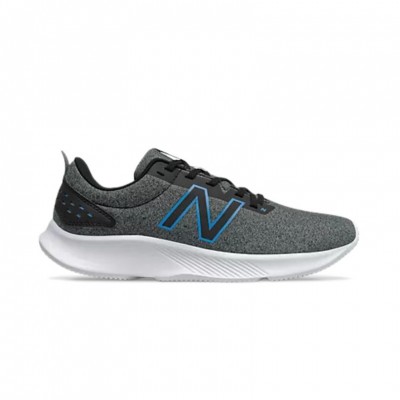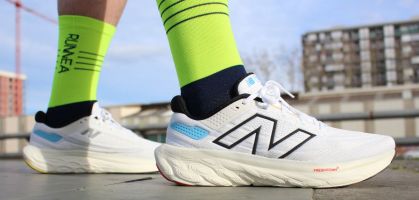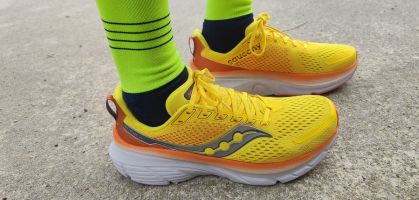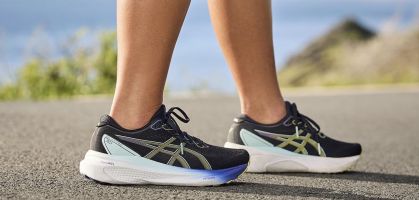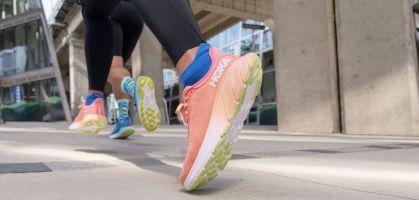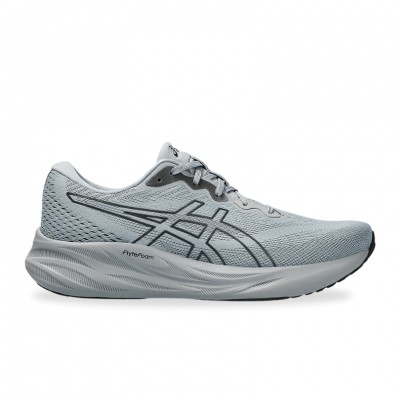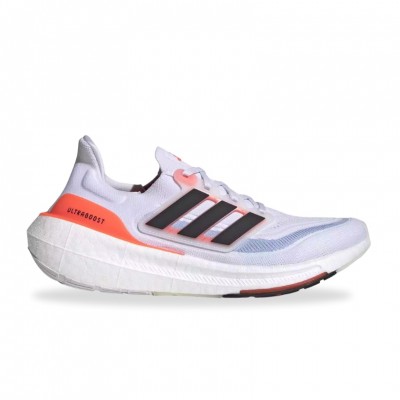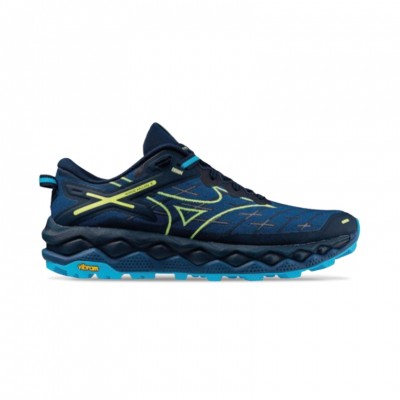Have you ever wondered what makes one running shoe better than another depending on your characteristics? Behind a shoe there is a work that includes product engineering teams, analysis and development of materials, design, manufacturing, testing... It is not magic, but the science behind each element that makes up its design. Understanding the anatomy of a running shoe is essential to select the shoe that best suits your needs and your running style. That's why we're going to show you the different elements that make up a shoe and how each of these parts must be taken into account when choosing one model or another.
Running shoes: New Arrivals
The main components of a running shoe
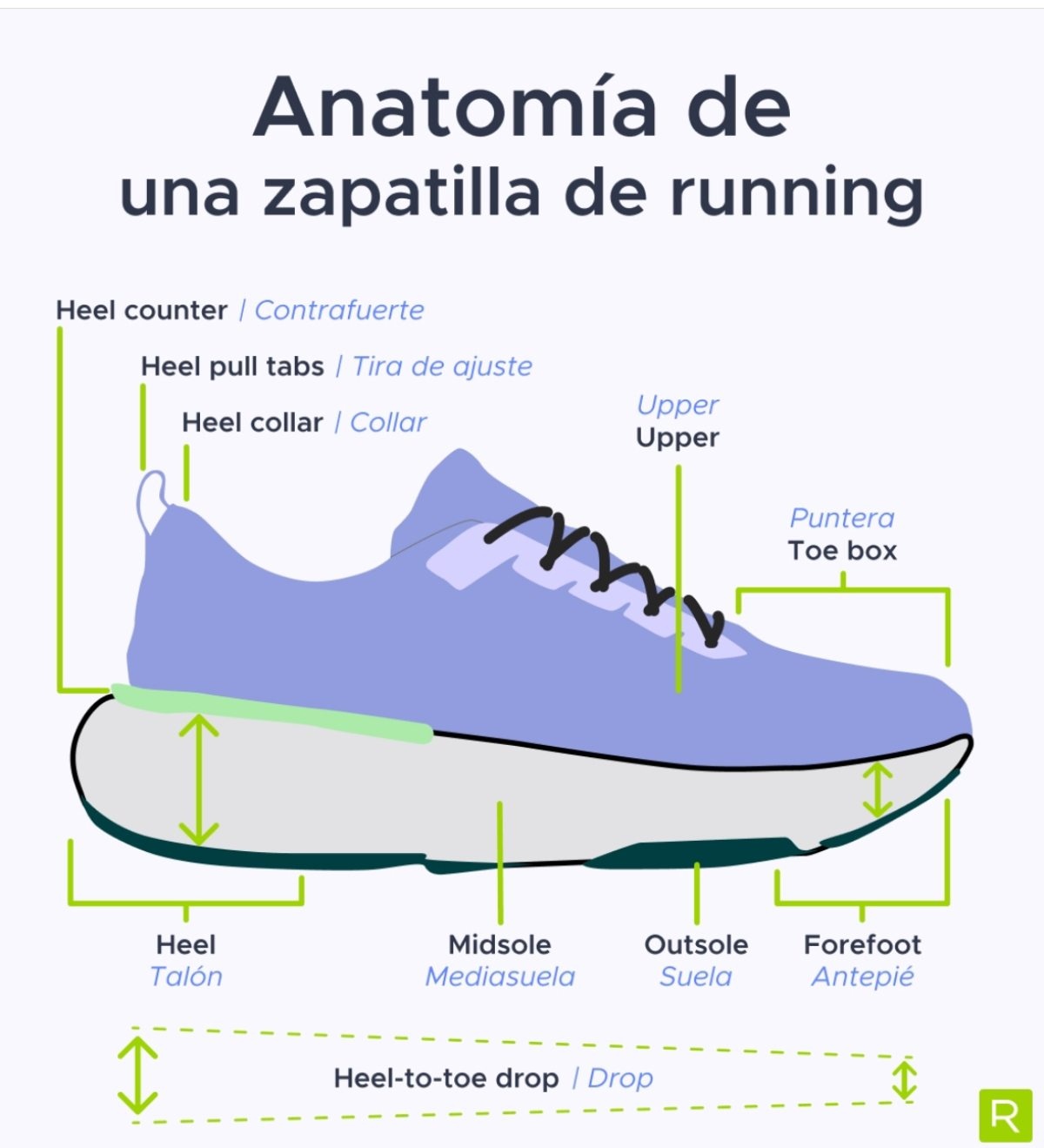
Upper
Imagine a glove that adapts to your foot. The upper should be an extension of you, offering support, fit but without weighing you down, and allowing your foot to breathe properly. It should wrap around your instep without chafing or jarring.
It is not just the 'skin' of the shoe, but a web of support that hugs the foot. It should be flexible enough to allow natural movement, but firm enough to hold the foot in place.
Toe Box
It is part of the upper but has a fundamental function. Think of the freedom your toes need to move with each stride. A proper toe box is like a good home for your toes: roomy and comfortable, where they can move freely without feeling pressured and facilitating the natural movement of the foot when executing the stride cycle.
Its design is more than just space; it is freedom for the toes, allowing the dispersion of the load with each step, vital for the biomechanics of the runner.
Tongue
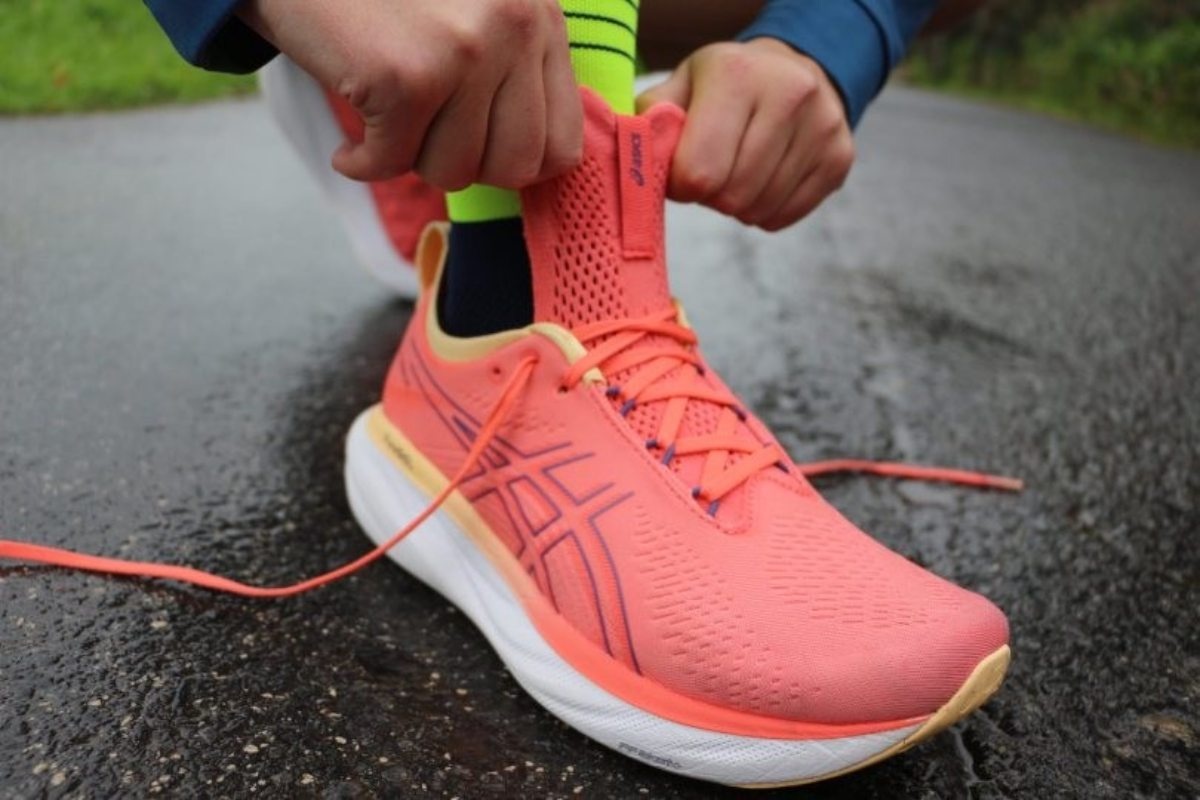
The tongue of a running shoe, often overlooked, is a vital component that plays an important role in the comfort and functionality of the shoe. Although it may seem like a simple piece of material, the tongue serves several critical functions:
- Pressure distribution: the tongue helps distribute pressure evenly across the instep (the top of the foot) when laces are tied. Without a proper tongue, laces can create uncomfortable pressure points, which could lead to irritation or pain during a run.
- Protection and cushioning: Provides a layer of cushioning between the laces and the foot, protecting the instep from abrasion and impact from the laces, especially on long runs or on uneven terrain where the foot and shoe are in constant motion.
- Fit and stability: A well-designed tongue contributes to the overall fit of the shoe, ensuring that the foot remains centered and stable. Some tongues are integrated into the upper design, offering a foot-hugging "sock-like" fit, while others have a traditional design, separate from the rest of the upper.
- Materials and construction: The tongues vary in thickness and material. Some are thin and lightweight, designed for fast, minimalist running shoes, while others are more cushioned and robust, found in training or trail shoes. Breathability and moisture management capabilities are also key design considerations.
- Slip prevention: A well-designed tongue should stay in place during a run. Some have features such as lacing loops or notches to help prevent it from sliding sideways, which could cause discomfort or the need for readjustments during a run.
- Additional aesthetics and functionality: In addition to its functionality, the tongue can also be an aesthetic focal point in the design of the shoe. It can include reflective elements for safety in low-light conditions or pockets to store lace ends.
Heel Counter
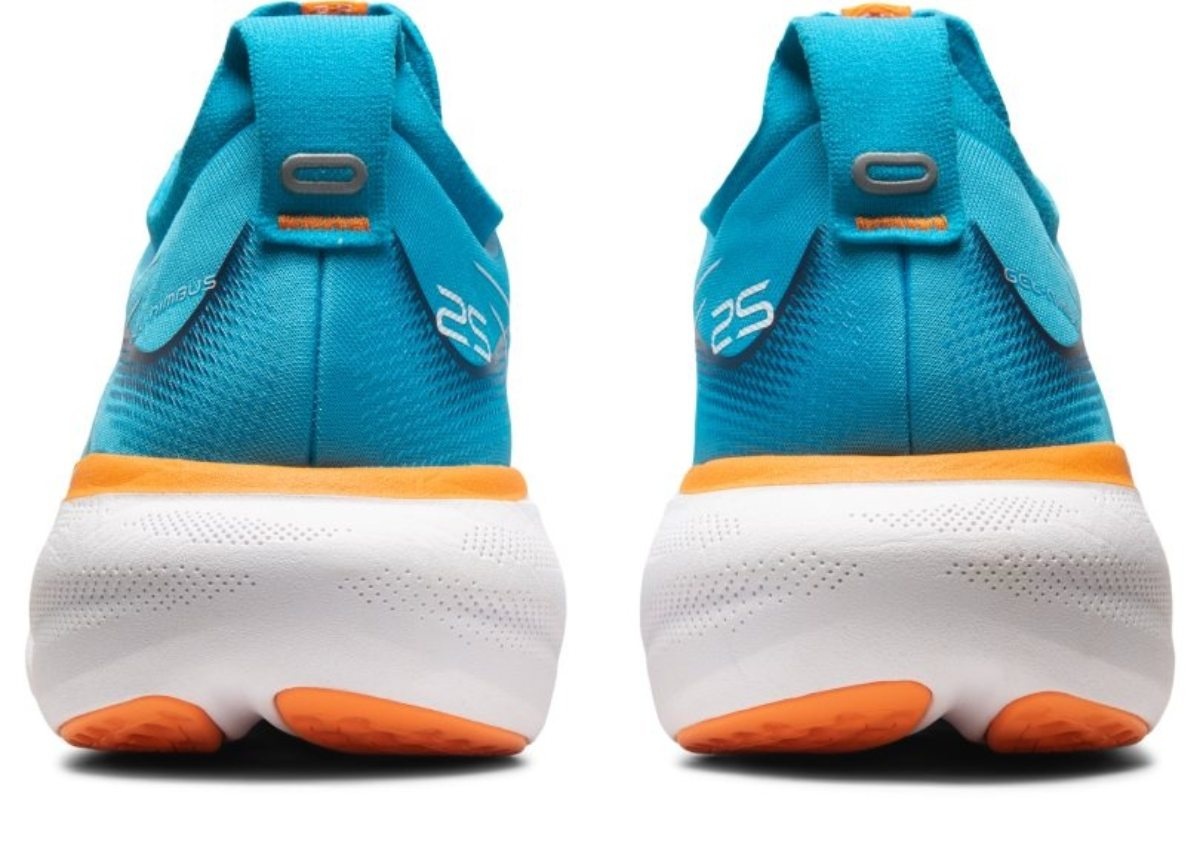
This is your squire in the battle against uneven terrain. It provides a secure embrace to your heel, keeping your foot firm and in control, no matter how you step on the ground.
It therefore provides stability and protection. A key piece for those who require control at the rear of the foot, essential for a safe and stable footing.
Outsole
Probably the most exposed and hardest hit area of a running shoe. It must be resistant, yes, but it must also offer a good grip, so that each step is safe and reliable.
The part that interacts directly with the ground, whether asphalt, rock, dirt.... It must therefore be abrasion resistant and designed with patterns that align with your running style, either for more grip or to facilitate a quicker stride transition.
In recent times the weight of the sole has been one of the elements that has been worked on the most. Compounds are sought that offer the combination of grip and durability with the lowest possible weight. Often these dynamics of the search for maximum lightness make brands bet on soles that do not completely cover the entire last of the shoe and are placed only in those areas where there will be more wear.
It is very important to know the way we run because, for example, if we run landing with the heel, it does not make much sense to buy a shoe where the toe or midfoot landing is proposed because it is likely to have less protection or less material in the heel area. An extreme example would be the Adidas Adizero Adios Pro Evo 1
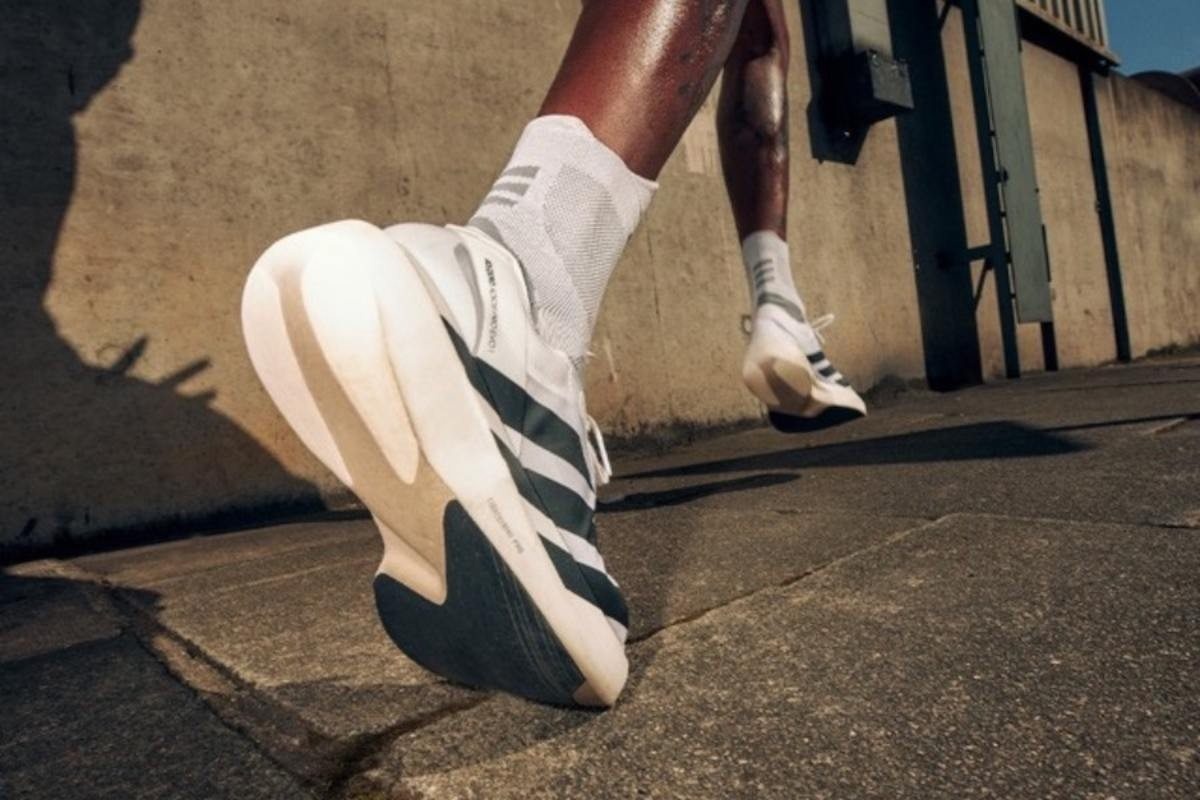
Midsole
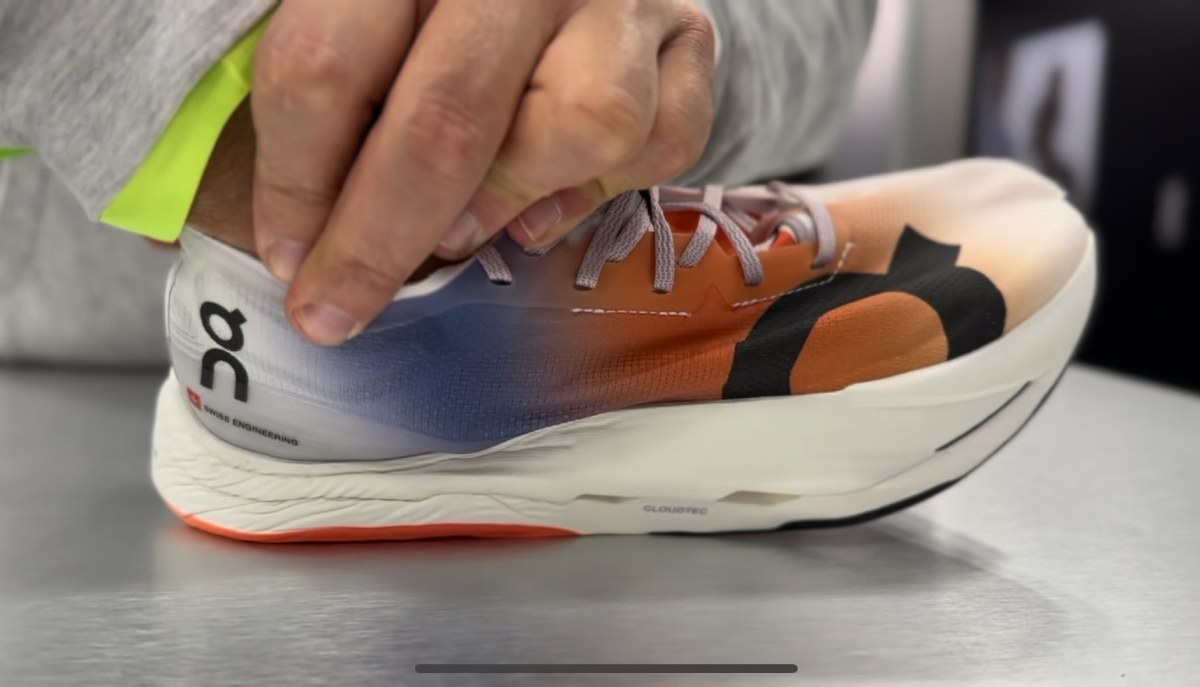
This is where the magic of cushioning comes to life. It's the core of every soft landing and every energetic takeoff. It's not just a layer of foam; it's your personal shock absorber against the terrain you face.
The midsole is the epicenter of cushioning in running shoes, a critical area that largely determines the comfort and biomechanical efficiency of the shoe. Its main function is to absorb the impact generated with each step, reducing the load on the runner's joints and muscles.
- Materials: Common materials in midsole manufacturing include EVA (ethylene vinyl acetate), polyurethane and various brand-specific proprietary foams, such as Adidas Boost or Nike React. These compounds are selected for their compression and rebound capabilities, offering a balance between softness and responsiveness.
- Cushioning technologies: Advanced cushioning technologies, such as air capsules or gels, are integrated to improve impact force dispersion. This allows for a smoother ride and can contribute to injury prevention.
- Midsole design: The design varies depending on the purpose of the shoe. Long-distance running shoes typically have thicker midsoles for greater cushioning, while shorter, faster running shoes may have thinner midsoles for more direct contact with the ground and better propulsion.
- Density and hardness: The density of the midsole directly affects the durability and feel of the footprint. A higher density can offer greater durability and stability, while a lower density can be lighter and provide a softer running feel.
- Shape and contour: The contour of the midsole can influence lateral stability and foot strike transition. Some shoes offer contours that guide the foot during the landing and toe-off phase, promoting running efficiency.
Choosing the right midsole will depend on the type of runner, weight, running style and personal preference.
Drop (Heel-to-toe drop)
The drop of a running shoe, also known as heel-to-toe drop or simply drop, is the difference in height between the heel and toe. This subtle but crucial detail has a significant impact on running biomechanics and how the foot interacts with the ground.
- drop range: The typical drop ranges from 0 to 12 millimeters. Minimalist running shoes tend to have a low drop (about 0-4 mm), while traditional running shoes tend to have a higher drop (10-12 mm).
- Impact on footfall: A higher drop generally favors runners who land heel-first, as it helps reduce stress on the back of the leg, including the calf and Achilles tendon. A lower drop promotes a more natural or forefoot stride, which can contribute to greater running efficiency and a lower likelihood of impact injuries.
- Adaptation and transition: The change from a high to a low drop should be gradual. Sudden adaptation to a significantly lower drop can increase the risk of injury as muscles and tendons adjust to the new demand.
- Preferences according to runner type: Runners with a more natural technique and looking for a "barefoot" running experience tend to prefer a low drop. On the other hand, runners who need more support and cushioning due to pronation or previous injuries may opt for a higher drop.
- Influence on running economy: Some studies suggest that a lower drop can improve running economy by promoting greater forefoot muscle activation and reducing reliance on heel cushioning.
- Customization and shoe design: Brands now offer models with varying drops to cater to the preferences and needs of different runners. In addition, some shoes are designed to accommodate custom insoles that can alter the effective drop.
Heel Collar
The padding around the ankle that contributes to fit and comfort. A good collar prevents heel slippage and adds support to the Achilles tendon.
Heel Pull Tabs
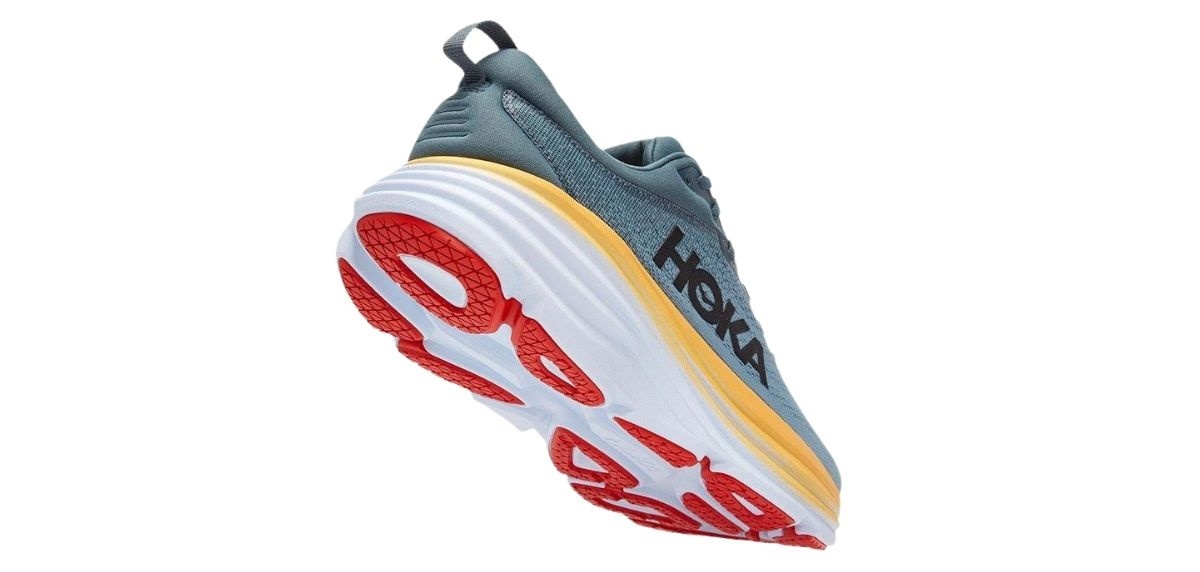
Allows the shoe to be put on and taken off with ease, a small detail that significantly enhances the user experience.
At RUNNEA, we are committed to the art and science of the perfect running shoe. It's not just about buying a shoe; it's about finding an accessory that fits you and helps you with your purpose, whatever it may be. Now that you know the fundamental pieces of a running shoe, if you want we can help you find the model that best suits you.
Not sure which running shoe to choose?
In a few simple steps we help you to choose the ideal running shoe for you
Go to the Shoe FinderRead more news about: Running News
